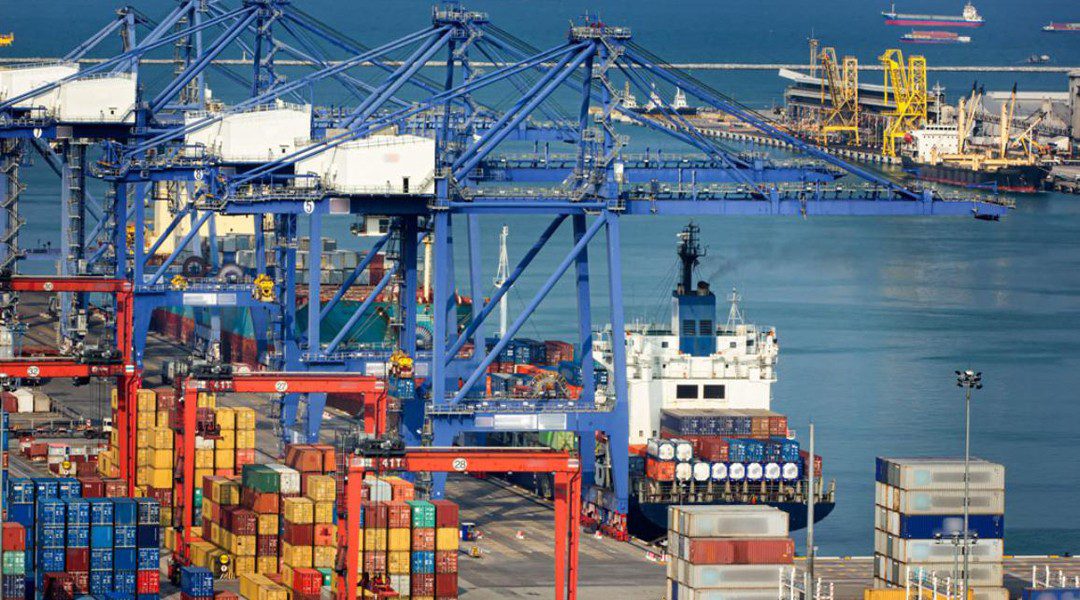A report by Ireland’s Marine Casualty Investigation Board
has revealed that there was a “close quarter incident” at the County Wexford
port on March 16th 2022 when two vessels passed within 100 metres of
each other outside the harbour’s breakwater. The MCIB said both vessels had to
take evasive action in order to avoid a collision.
The incident involved the Brittany Ferries-operated Connemara (IMO 9349760), which was arriving from the Spanish port of Bilbao, and
Stena Line UK’s Stena Europe (IMO 7901760), which had just left Rosslare
Harbour on a sailing to Fishguard.
The vessels are under the management of different
companies within the Stena group.
The MCIB report said that the Connemara had arrived at
the port around 45 minutes ahead of its scheduled arrival time of 08:15 local
time. However, the report found that the ship did not follow instructions
issued by Rosslare Port Control to wait outside the harbour. Instead it proceeded
directly towards the breakwater. The crew of Connemara subsequently claimed that
they had no option but to maintain speed because there had been due a strong
northerly breeze.
Meanwhile the Stena Europe had been given permission to
sail and had departed its berth, unaware that the Connemara was approaching the
breakwater.
At
07:27 an officer on the bridge of Stena Europe was
recorded as saying: “He is right in the way” before the ferry turned its rudder
hard to starboard.
The report said original statements made by the bridge
team of Connemara did not accurately reflect VHF communications between the two
vessels. They claimed communications from Rosslare Port Control and Stena
Europe were “misheard” and “understood completely wrong” which had led to the
situation being wrongly interpreted. They also claimed they initiated contact
with the other vessel. However, recordings clearly showed Stena Europe made the
first contact and informed Connemara of its intention to pass to the south of
them.
The MCIB said the failure of the Connemara to carry out
the advice of the port authorities to wait outside the harbour was a causative
factor of the incident, as was the failure of Rosslare Port Control to ensure its
instructions were followed.
The MCIB said recordings of radio communications showed
the message given by the port controller to wait outside the harbour could have
been construed as “more of a suggestion rather than an instruction.” The report
found that the lack of clarity about the instruction and the lack of adequate
confirmation was a contributory factor.
The report observed that Rosslare Port Control did not
attempt to clarify the intentions of either vessel, or to highlight the
possibility of a close-quarter situation, even when it was clear that such an incident
had become inevitable. The MCIB concluded that the port controller had at least
six minutes to clarify with Connemara about its intentions, but that they did
not do so.
The report said poor bridge team management and
inappropriate VHF radio procedures were a contributory factor.
The MCIB also found that the Connemara should have been
aware that a close-quarter situation could develop at the entrance to the
harbour unless action was taken. The report found that the incident could have
been avoided if both vessels had complied with the International Regulations
for the Prevention of Collisions at Sea, which require that a proper lookout
had to be kept at all times by all available means. It noted Stena Europe’s
bridge team at the time were not monitoring traffic, but were relying on port
officials.
The report said it was evident that the Stena Europe was
concerned about its sailing time and not being held up by the early arrival of
the Brittany Ferries vessel. The MCIB said that this might have affected the
Stena Europe’s decision-making process – a claim that the ship’s master denied.
The report also highlighted how the port controller had
no maritime qualifications or maritime training. “The lack of training and
maritime experience made it very difficult for the port controller to fully
appreciate the potential consequences of allowing a close-quarter situation to
develop,” it added.
The MCIB issued a series of recommendations.
In response Stena said the bridge team of Connemara had
been sent on a bridge management course. Stena’s own investigation into the
incident concluded that the vessel had not followed the advice from the port
controller due to a lack of communications between the bridge team.
Stena said it also informed crews that the safety of the
vessel takes priority over rigidly adhering to its schedule.
The MCIB said that Ireland’s Minister for Transport
should also consider introducing legislation to ensure personnel working in
safety critical roles in harbour control had suitable training and
qualifications.
2007-built, Bahamas-flagged, 27,414 gt Connemara is now
owned by Ferry Lines Singapore Pte ltd care of manager StraitNZ Bluebridge Ltd
of Wellington, New Zealand. ISM manager is Stena Marine Management Aps of
Hellerup, Denmark.
As of January 4th the vessel was en route from
Southampton to the Panama Canal, ETA January 6th, having left
Southampton on December 22nd.
1981-built, UK-flagged, 24,828 gt Stena Europe is owned
by Stena Ropax ltd care of Stena Line Ltd of Holyhead, UK. ISM manager is
Northern Marine Ferries ltd of Clydebank, UK. It is entered with Gard AS on
behalf of Stena Ropax. Gard is claims leader for Hull, on behalf of Stena
Rederi AB.





